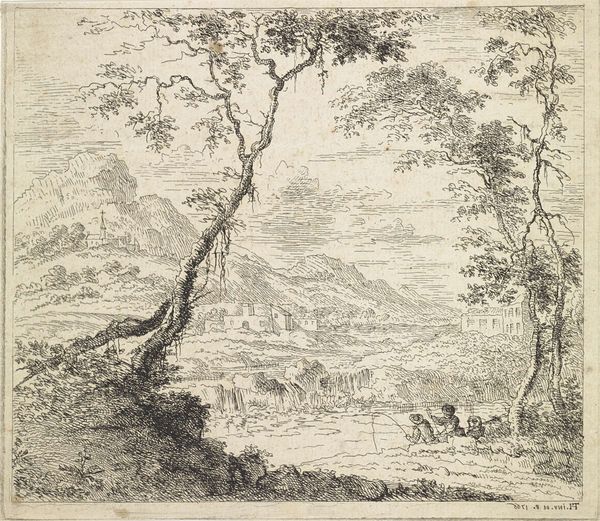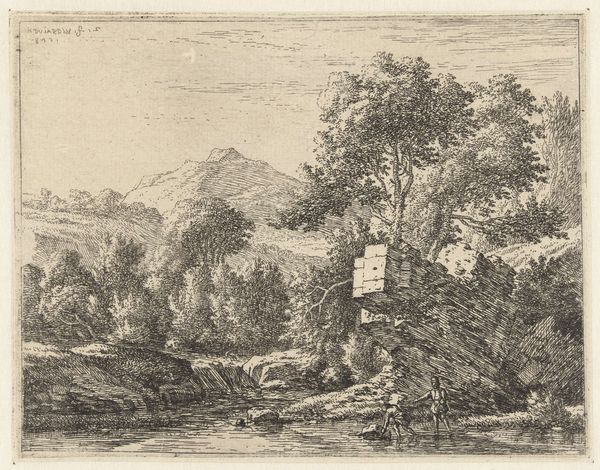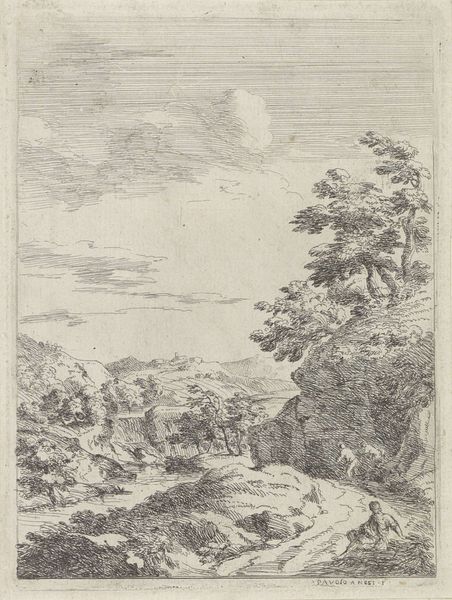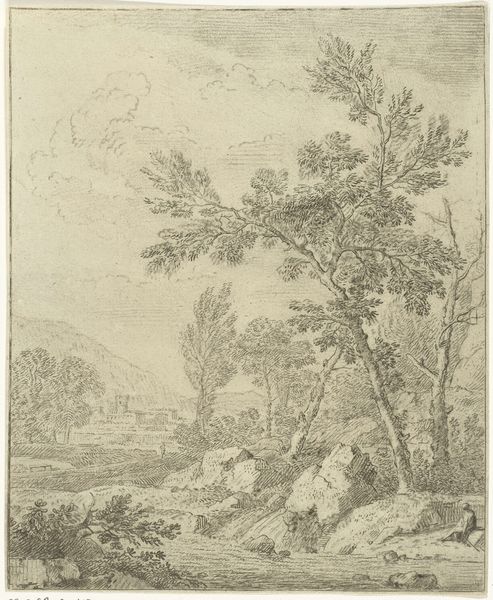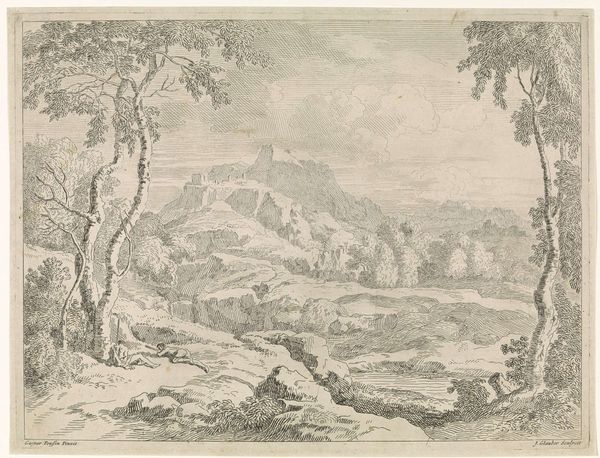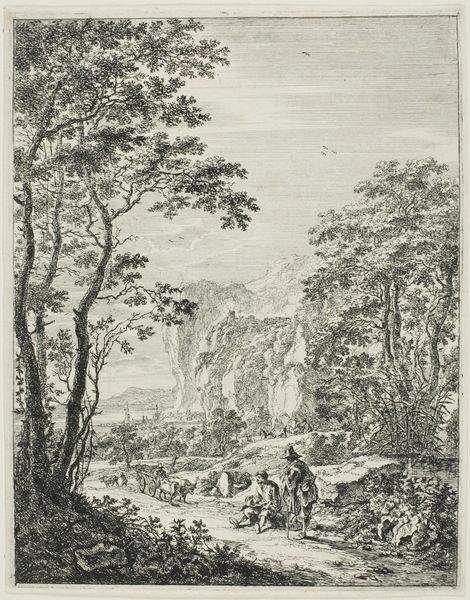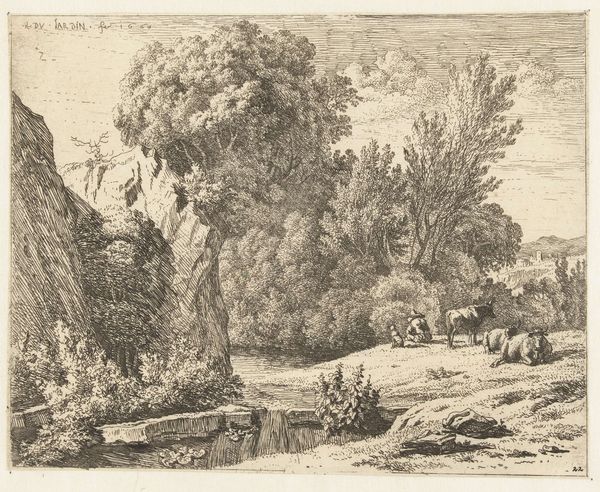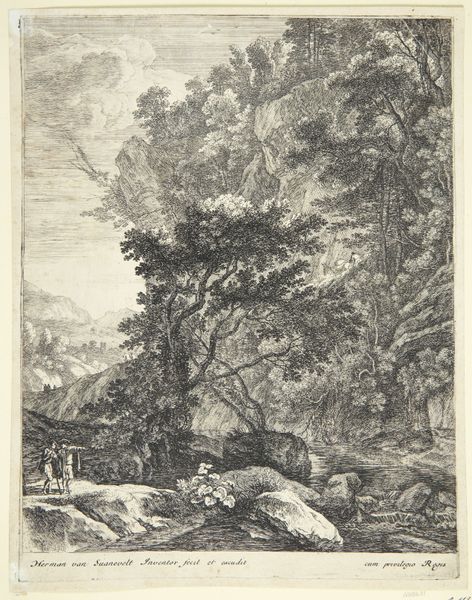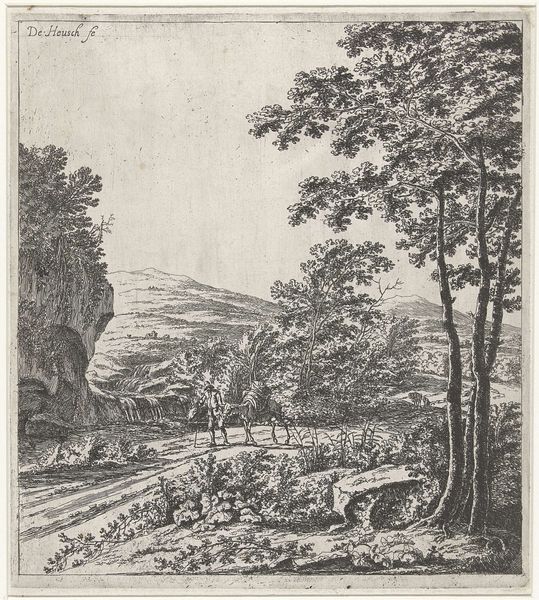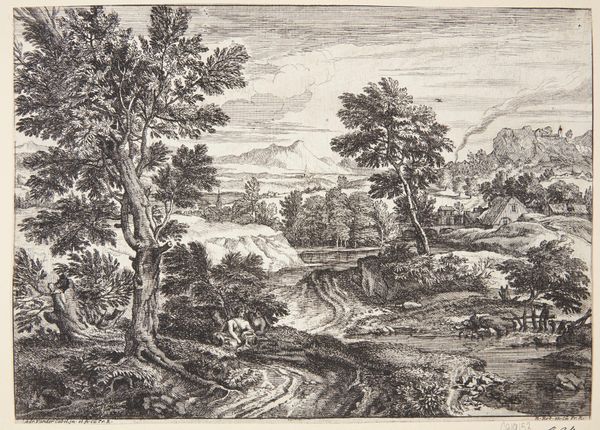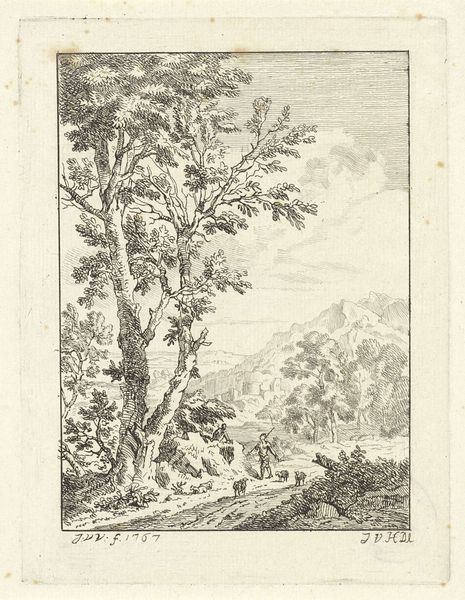
#
pen and ink
#
landscape illustration sketch
#
mechanical pen drawing
#
pen illustration
#
pen sketch
#
old engraving style
#
etching
#
pen-ink sketch
#
pen work
#
botanical art
Dimensions: height 149 mm, width 107 mm
Copyright: Rijks Museum: Open Domain
Jan Jansz. van der Vinne created this landscape with a shepherd family using etching in 1767. During this period, the Dutch Republic experienced economic decline, accompanied by social stratification. Van der Vinne, working within this context, created a scene where shepherds, traditionally romanticized as symbols of simple virtue, take center stage. However, the reality of rural life was often harsh, marked by poverty and limited opportunity. While this piece seems to uphold the traditional representation of rural life as idyllic, we can question to what extent it reflects the experiences of the working class. The careful arrangement of the composition, with the family and their flock nestled beneath the trees, creates a sense of harmony. This piece invites us to consider the complex relationship between artistic representation and lived experience, and to reflect on how notions of identity and class are constructed and negotiated within the visual sphere.
Comments
No comments
Be the first to comment and join the conversation on the ultimate creative platform.
